China Caixin PMI Services dropped to 51.8 in July, down from 52.0 and missed expectation of 52.0. PMI Composite rose slightly from 50.6 to 50.9. Markit noted that manufacturing sector stabilized but service sector growth weakened further. Total new work expanded at a slightly faster pace. Also, optimism regarding future output improved to three- month high.
Commenting on the China General Services PMI™ data, Dr. Zhengsheng Zhong, Director of Macroeconomic Analysis at CEBM Group said:
“The Caixin China General Services Business Activity Index dipped to 51.6 in July, falling from 52.0 in the previous month.
- Demand for services remained solid. The gauge for new business edged down, although it remained in expansionary territory. The gauge for new export business rebounded back into positive territory, signaling a recovery in overseas demand.
- The employment gauge stayed in expansionary territory and edged up, indicating the services sector’s strengthening capacity to absorb workers.
- Both gauges for prices charged by service providers and input costs climbed further into positive territory. Prices remained stable.
- The measure for business activity expectations stayed the same as the previous month, suggesting service providers’ confidence regarding the outlook for their businesses was stabilizing.
“The Caixin China Composite Output Index inched up to 50.9 in July from 50.6 in the month before, chiefly thanks to an improvement in the manufacturing sector.
- The gauge for new orders increased and the one for new export business returned to expansionary territory, suggesting firmer demand for products and services.
- The measure for employment edged up, although it remained in contractionary territory. This indicates that lingering downward pressure on the job market didn’t escalate.
- The gauge for input costs edged down, but remained in positive territory, while that for output charges dipped into negative territory, pointing to downward pressure on the profitability of downstream companies.
- The measure for future output expectations climbed further into positive territory, suggesting a recovery in business confidence.
“In general, China’s economy showed signs of recovery in July, thanks to large-scale tax and fee cuts, as well as ongoing support from monetary policy and government-driven infrastructure investment. It remains to be seen if the economic recovery can continue amid trade fictions with the U.S. and rigid regulations on the financial sector and debt levels. The recovery in July suggests that China’s economic slowdown is under control.”




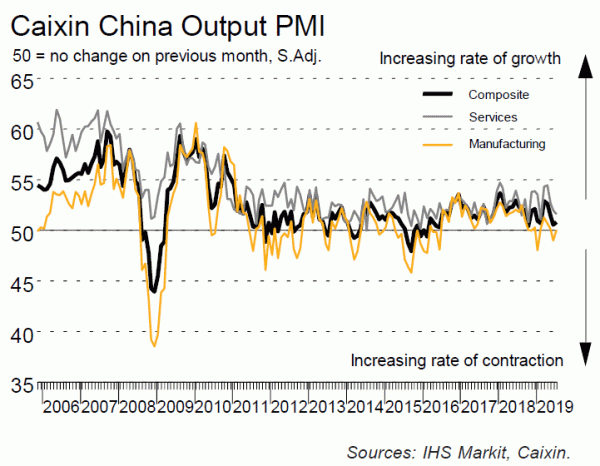
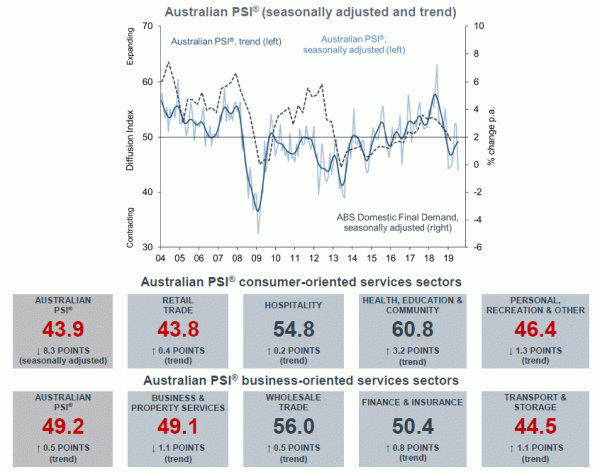
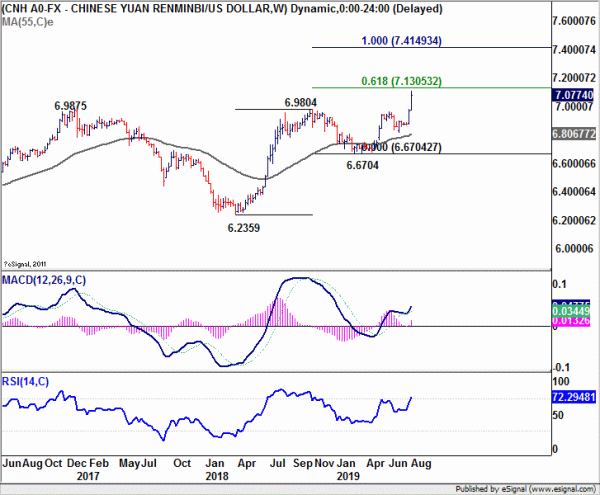
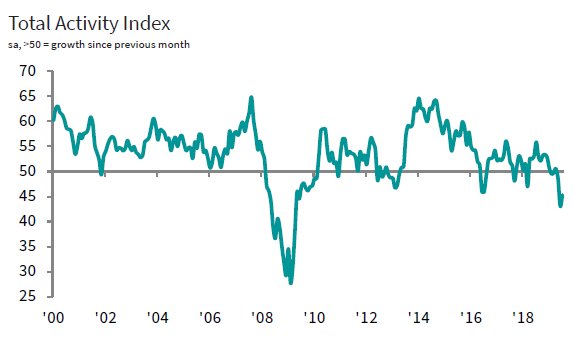
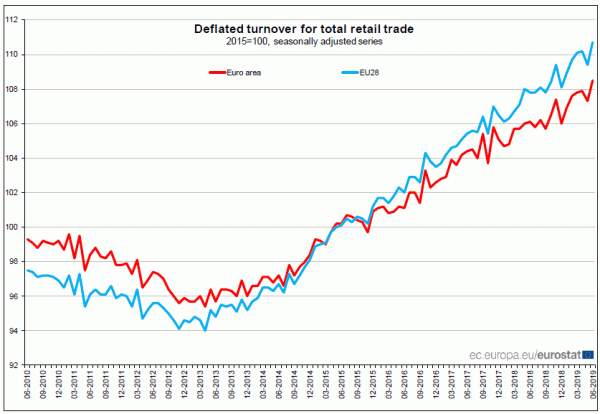
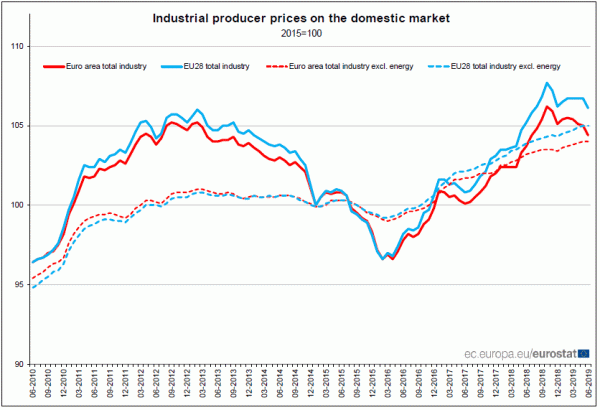
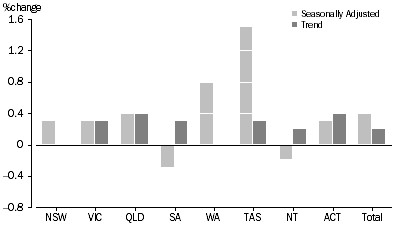
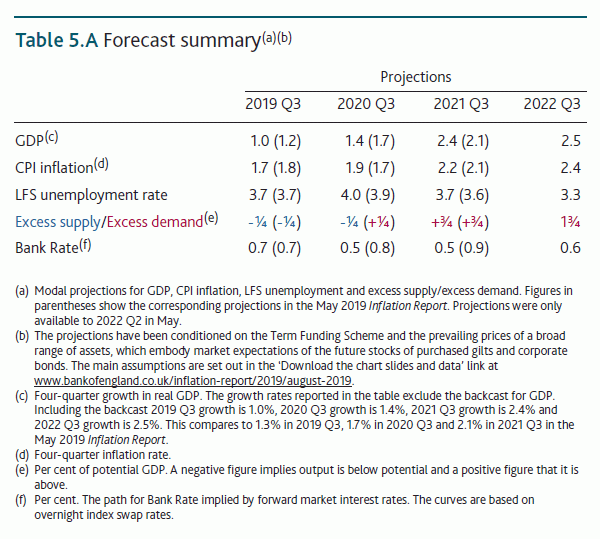
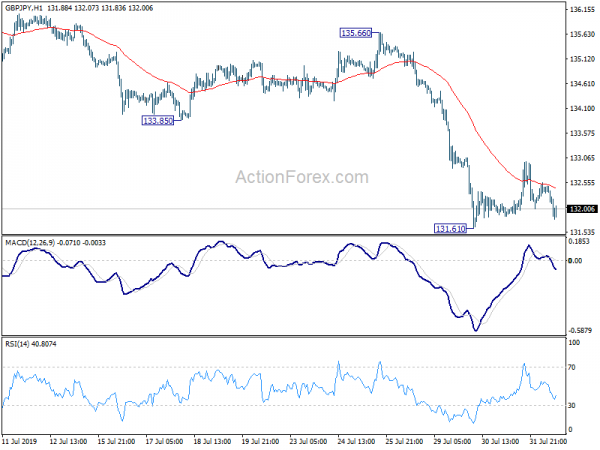
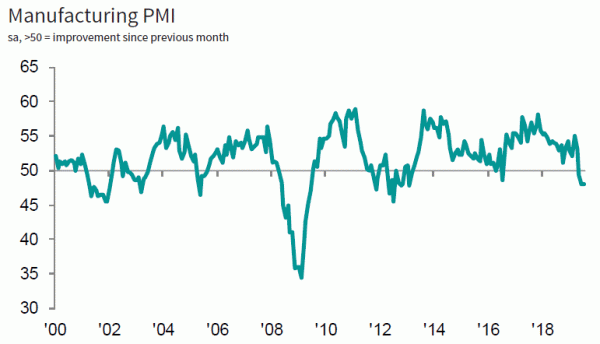
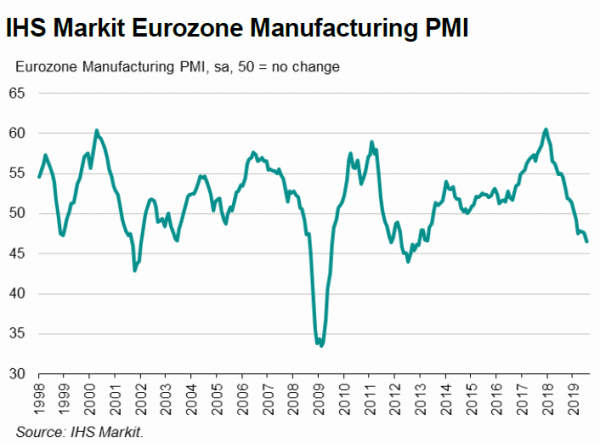
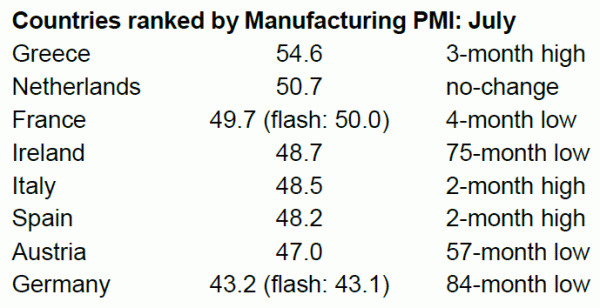
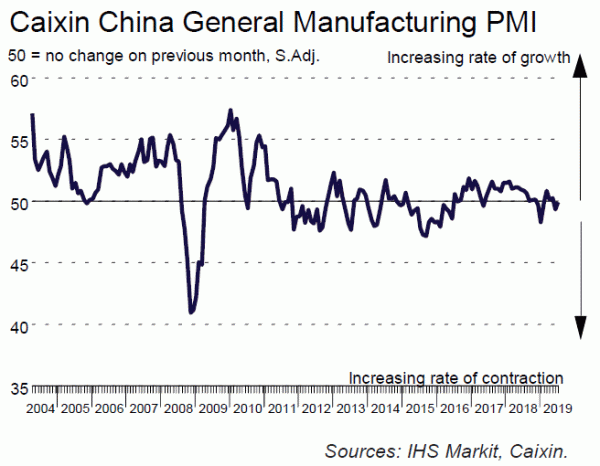
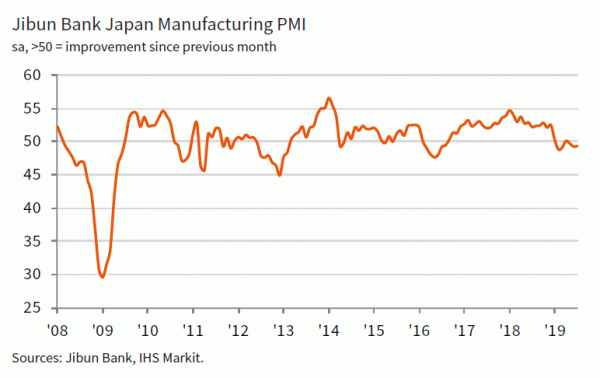
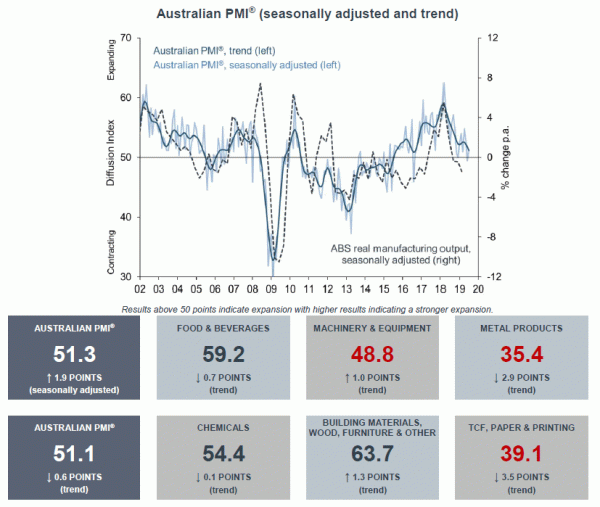

Eurozone PMI Composite finalized at 51.5, scale of manufacturing downturn starting to overwhelm
Eurozone PMI Services was finalized at 53.2, down from 53.3, and June’s 53.6. PMI Composite was finalized at 51.5, down from 52.2. Looking at the member states, Germany PMI Composite dropped to 50.9, 73-month low. Italy hit 51.0, 4 -month high. Spain dropped to 51.7, 68-month low. France hit 51.9, 2-month low.
Chris Williamson, Chief Business Economist at IHS Markit said:
“The service sector continued to sustain the expansion of the overall eurozone economy at the start of the third quarter, but there are signs that the scale of the manufacturing downturn is starting to overwhelm.
“Trade war worries, slower economic growth, falling demand for business equipment, slumping auto sales and geopolitical concerns such as Brexit led the list of business woes, dragging manufacturing production lower at its fastest rate for over six years. While the service sector has helped offset the manufacturing downturn, growth also edged lower among service providers in July, meaning the overall pace of expansion of GDP signalled by the PMI has slipped closer to 0.1%.
“The main source of expansion currently appears to be the consumer, in turn buoyed by the relative strength of the labour market. However, with the July survey indicating the weakest jobs gains in over three years, there are signs that this growth engine is also losing impetus, and adding another headwind to the economy for the coming months.”
Full release here.